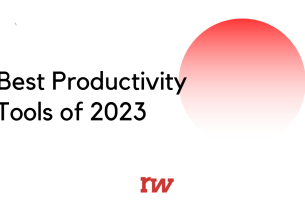Giulia Acconcia grew up in the picturesque, historic town of Spoleto, nestled in the foothills of Italy’s Apennine Mountains. Already in secondary school, she became fascinated with modern technology – a passion that would shape her future.
Her love of electronics led her to the Polytechnic University of Milan, Italy, where she now finds herself at the forefront of quantum computing research.
Unlike the computers and smartphones we use every day that rely on silicon chips and moving electrons, photonic quantum computers harness the power of light particles, or photons, to process information at astonishing speeds.
Quantum acceleration
Quantum computers promise to be much faster than today’s devices and capable of tackling complex problems that currently stump even the most advanced machines. But this technology faces significant hurdles before delivering commercial value, which several firms and research organisations around the world are working to solve.
Despite the challenges, things are moving forward. “We have seen a lot of progress in the last two to three years, at a pace nobody really expected,” said theoretical physicist Andrea Rocchetto.
He is the co-founder of Ephos, an Italian company involved in a collaborative EU-funded research initiative named QLASS, which is being coordinated by Acconcia.
The initiative, managed by the Fondazione Politecnico di Milano, brings together a team of researchers from top research facilities and SMEs in France, Italy and Germany. They are seeking to improve quantum performance by harnessing the properties of glass.
“
We have seen a lot of progress in the last two to three years, at a pace nobody really expected.
Their mission is to leverage the glass chips built by Ephos to develop a photonic quantum computer. The chips manufactured by Ephos use light, rather than electricity, to process information. They feature up to 200 reconfigurable optical modes, allowing them to dynamically adjust how light spreads across the chip.
But working with light at such a tiny scale is not easy.
“You have to use materials that can transmit light. This is challenging because you have to confine light, but avoid absorption,” said Acconcia. “If it is absorbed, it won’t travel.”
The QLASS researchers are developing a machine that could overcome these challenges.
Their goal is to generate single photons and guide them through glass circuits – something that could help solve real-world problems, like designing better batteries, discovering new drugs, or even unlocking the mysteries of the universe.
Heart of glass
One of their most promising innovations is laser writing in glass, a cutting-edge technique developed by Ephos that could help quantum technology reach new heights.
Ephos is unique in making quantum photonic chips out of glass.
In their process, light particles are generated and travel along an optical fibre and into this chip. Everything is made from glass, so there is less risk of photons straying along the way.
That is crucial, since losing even a photon means losing valuable information.
The task is complex and requires a truly pan-European effort. In Germany, Pixel Photonics is perfecting ultra‑sensitive detectors to capture each photon, while Schott AG supplies the high‑quality glass substrates.
Over in Italy, Acconcia’s team in Milan develops the high-performance electronics that drive the system, while experts in experimental quantum optics at Rome’s Sapienza University handle single photon generation.
Meanwhile, in France, the Unitary Foundation France is building open-source software to facilitate quantum operations. Teams at the National Centre for Scientific Research and the Université de Montpellier are modelling advanced energy‑storage solutions, crucial groundwork for future quantum-driven applications.
This collaborative network aligns perfectly with Europe’s Digital Decade and Chips Act goals to deploy the continent’s first quantum‑accelerated supercomputer by 2025 and to nurture a home‑grown quantum‑chip industry by 2030.
Betting big on quantum
The drive to make computers faster and more powerful is facing physical limits of how much we can downsize silicon chips. Quantum computers are an entirely different beast, but scientists still have work to do to tame them.
“
Doing research takes a long time, but when you get so close to application, you feel you can really make a difference in the near future.
The QLASS researchers share a common goal: to build an operational photonic quantum device at Sapienza University by 2026. Once completed, software developed at the Université de Montpellier and the Unitary Foundation will put this device to the test.
Its first challenge? Designing better lithium-ion batteries, essential for storing renewable energy and electrifying European transport. This is something that excites Acconcia.
“This appeals to my interest in green technologies,” she said. “Doing research takes a long time, but when you get so close to application, you feel you can really make a difference in the near future.”
By using variational quantum algorithms – special instructions that help quantum machines solve problems more efficiently – quantum computing could simulate battery chemistry, speed up the search for new materials, and even improve how we monitor battery health.
Commercial interest
Meanwhile, the Quantum Technologies Flagship, a decade-long EU initiative launched in 2018, is supporting commercial quantum applications with a €1 billion budget.
“Overall, Europe is competitive with the US and China in terms of our deep talent pool, and Europe has quite a diverse and rich startup scene,” said Rocchetto. “Though we do lack big commercial players with the deep, deep pockets of the US.”
Quantum computers could transform chemistry, too. While scientists understand the rules governing atoms and compounds, tracking their interactions in real time is incredibly complex – beyond the reach of today’s silicon computers.
“Simulating quantum systems is likely to help us with drug discovery and the discovery of new materials,” said Rocchetto. He believes quantum computing will ultimately open new doors.
“It will enable us to discover more about the universe itself. That is the number one reason why we should build these machines.”
Research in this article was funded by the EU’s Horizon Programme. The views of the interviewees don’t necessarily reflect those of the European Commission. If you liked this article, please consider sharing it on social media.



